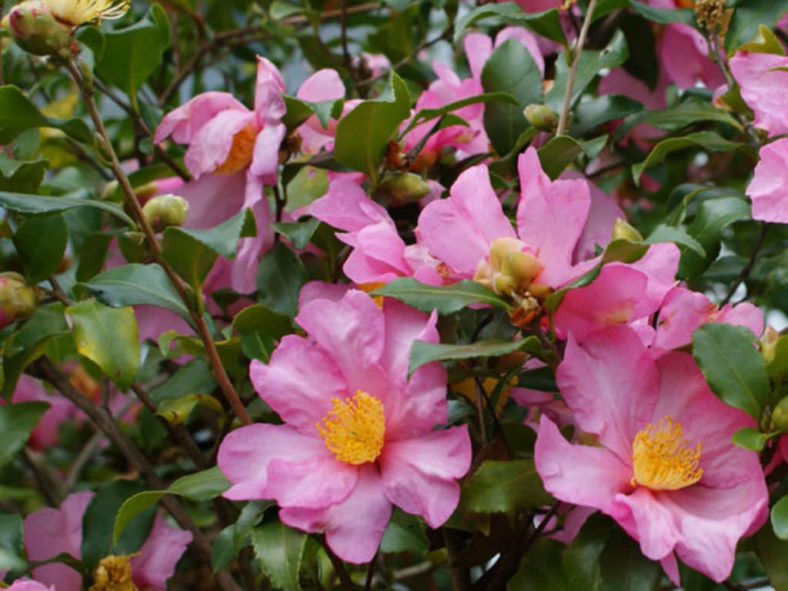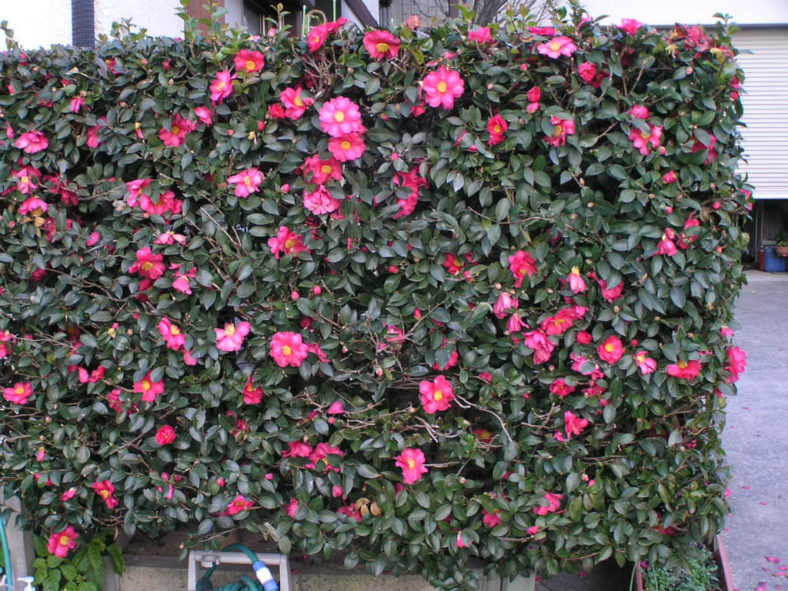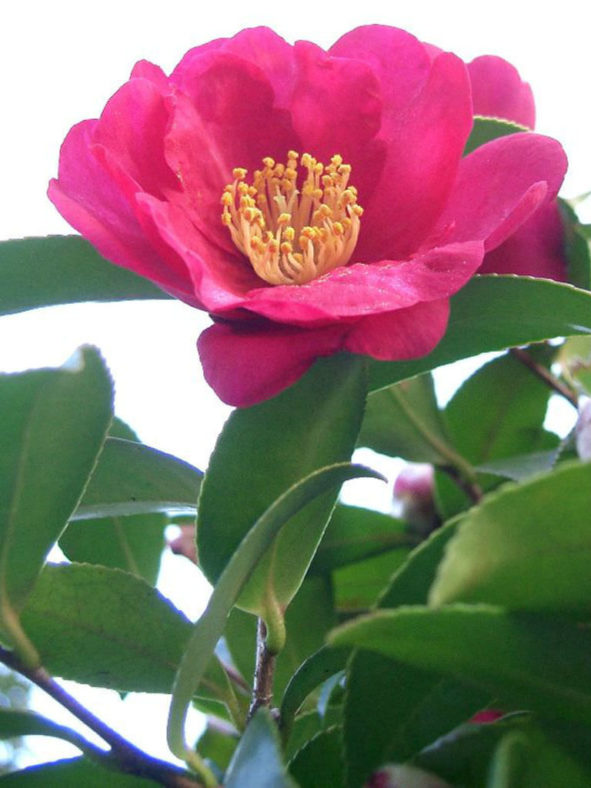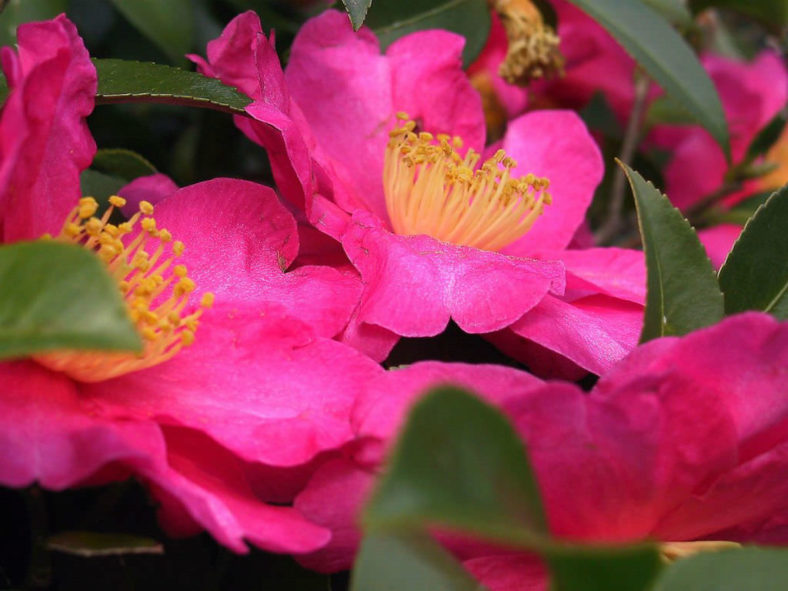Scientific Name
Camellia sasanqua Thunb.
Common Name(s)
Sasanqua Camellia
Synonym(s)
Camellia miyagii, Camellia tegmentosa, Sasanqua malliflora, Sasanqua oleifera, Sasanqua vulgaris, Thea sasanqua
Scientific Classification
Family: Theaceae
Subfamily: Cactoideae
Tribe: Cacteae
Genus: Camellia
Origin
Camellia sasanqua is native to China and Japan.
Flower
Color: White to dark pink
Bloom Time: Late summer through fall and into winter
Description
Camellia sasanqua is an evergreen shrub that grows up to 16.4 feet (5 m) tall. Leaves are broadly elliptic with finely serrated margins, up to 3 inches (7.5 cm) long and up to 1.2 inches (3 cm) wide. Flowers are up to 3 inches (7.5 cm) in diameter, with 5 to 8 white to dark pink petals. Depending on the selection and where you live, it can bloom anytime from late summer through fall and into winter.

Hardiness
USDA hardiness zone 7a to 9b: from 0 °F (−17.8 °C) to 30 °F (−1.1 °C).
How to Grow and Care
Choose a large rugged pot, terracotta, wood, or stone, and part fill with ericaceous compost, and then add your plant and backfill so that the level of the pot is level with the soil. Water well, preferably with water taken from a water butt. If you use tap water, which tends to be alkaline, allow it to stand for a morning first.
Repot every other year into fresh potting compost. In the intervening years, remove the top 2 inches (5 cm) of compost and add fresh compost. You can repot back into the same pot if you trim off up to one-third of the roots to make room for fresh potting compost or go up into a larger pot. This regime will keep your Camellia happy.
Camellias are fast-growing tap-rotted plants, and the new growth can snap off in windy positions, so staking is advisable for the first few years until the Camellia becomes bushy. They do tolerate windy conditions, however, once established, and are often used as windbreaks in gardens where they thrive.
See more at How to Grow and Care for Camellia.
Links
- Back to genus Camellia
- Plantpedia: Browse flowering plants by Scientific Name, Common Name, Genus, Family, USDA Hardiness Zone, or Origin
Photo Gallery
Click on a photo to see a larger version.




